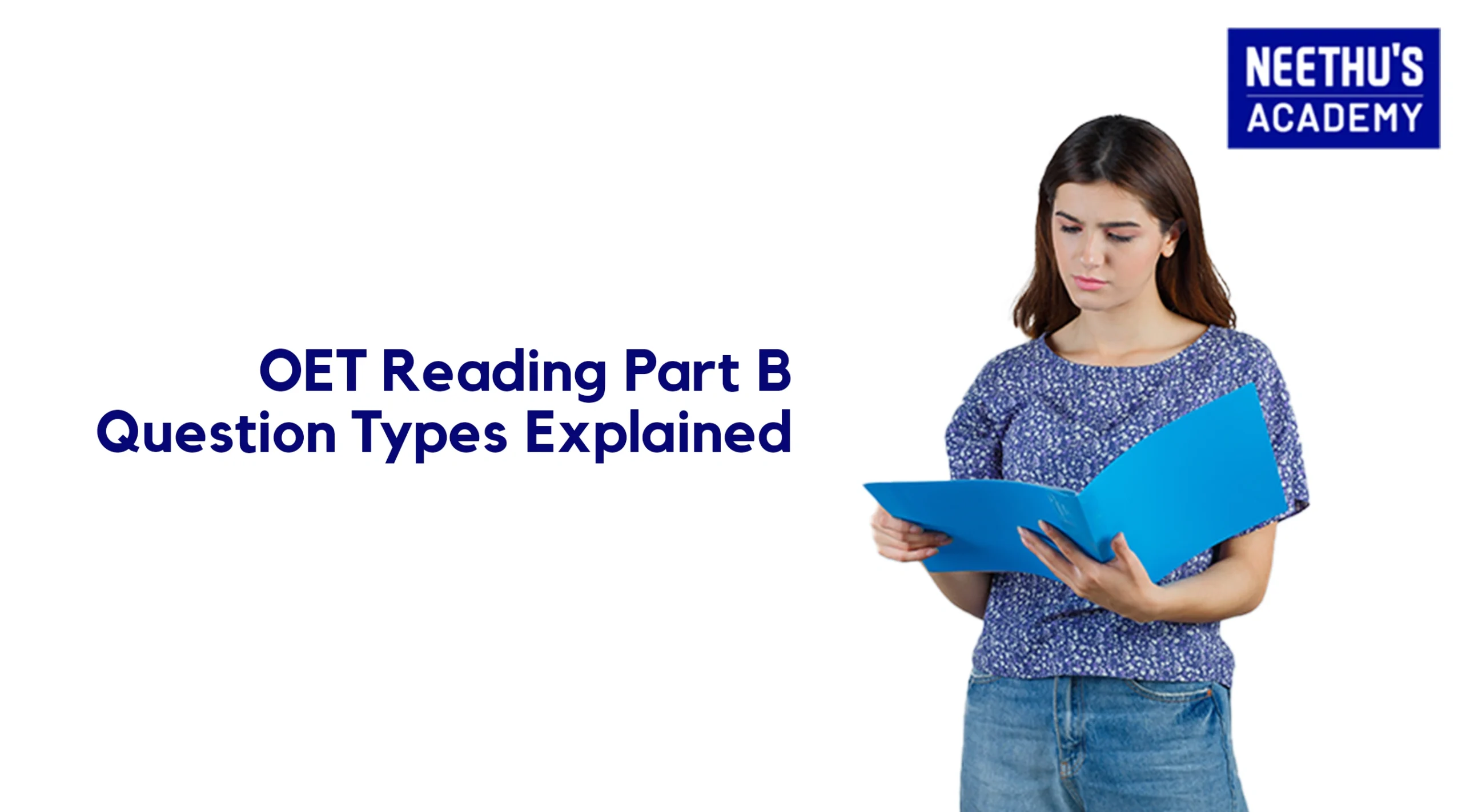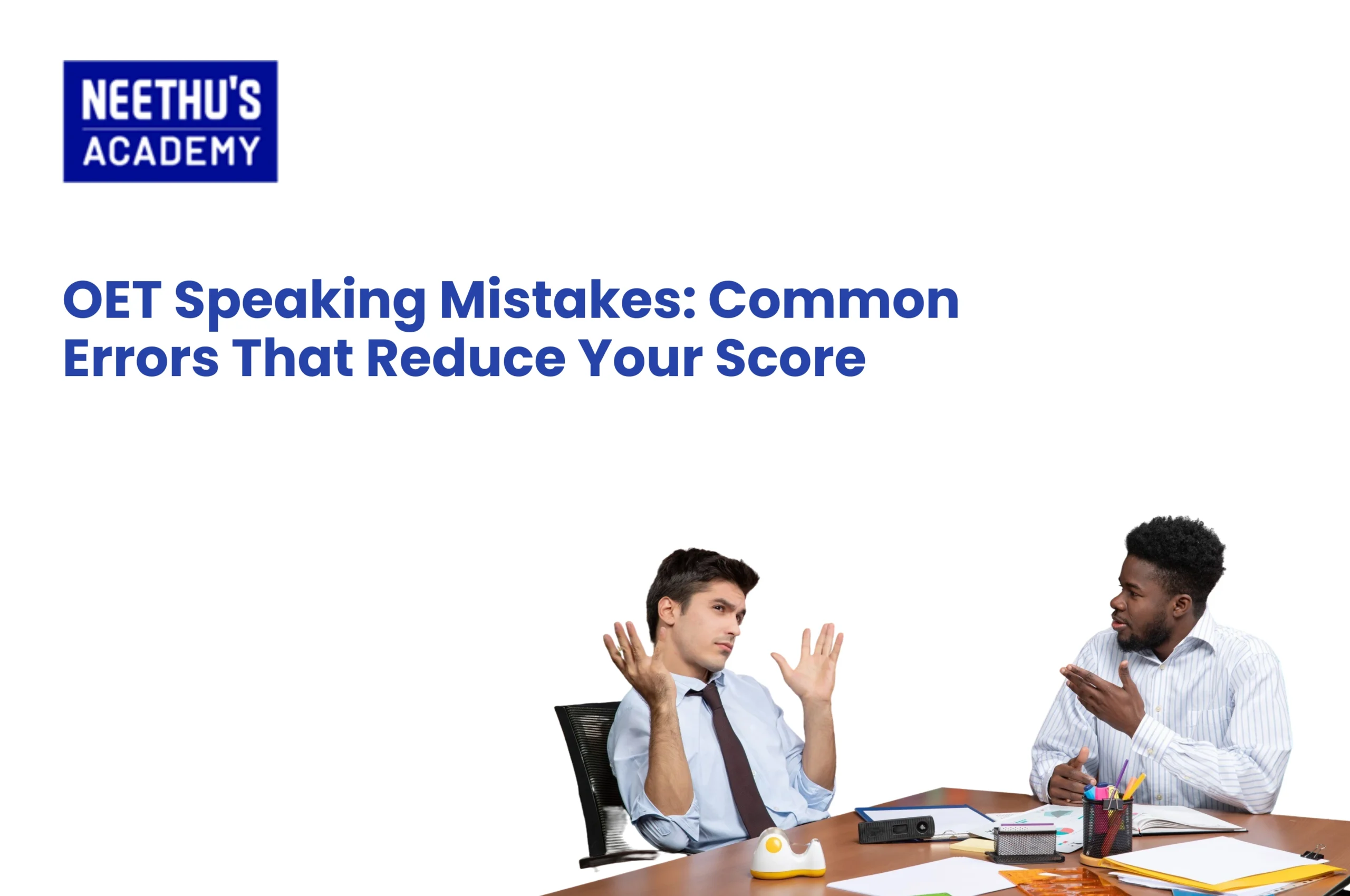
The OET Reading section assesses whether or not a candidate can comprehend and evaluate healthcare-related texts. This is why OET Reading Part…

The Occupational English Test (OET) is a popular English language proficiency test for medical professionals, including doctors who desire to practice in English-speaking countries. Out of its four sub-tests—Listening, Reading, Writing, and Speaking—OET Reading is commonly perceived as challenging due to its complicated format and stringent time limitations. Practically all candidates, particularly those who are not native English speakers, find OET Reading multiple choice questions troublesome, which come in both Part B and Part C of the test.
If you’re planning to enhance your OET Reading performance, learning multiple-choice strategies is key. This blog shall provide useful OET Reading tips, effective OET Reading strategies, and an understanding of how OET coaching centres can help guide you.
The OET Reading sub-test consists of three parts:
Understanding gist, detail, opinion, tone, and implied meaning is the emphasis of Parts B and C, hence making these sections more difficult.
The secret to a high score is conditioning your brain to read efficiently and fast, find useful information, and distinguish between distractors and the right answers based on confidence and evidence.
You have only 45 minutes to finish all 42 questions. Most applicants are unable to get their time in check.
Solution: Practice regularly under timed conditions to develop speed and familiarity. Use a stopwatch and mimic the actual exam setting.
In multiple-choice tests, answer choices can frequently appear very similar.
Solution: Learn to cross out incorrect options by recognizing keywords and trying to find an exact or slightly different match in the text.
Obscure words can confuse candidates and affect understanding.
Solution: Keep a vocabulary notebook centered on medical words, synonyms, and frequently paraphrased phrases.
Misreading questions or guessing answers without reference to the text is a major problem.
Solution: Always read both the question and all options carefully, and refer back to the text for verification before choosing your answer.
To become successful in OET Reading , particularly multiple-choice ones, use these tried-and-tested strategies:
Instead of reading the passage, just go over the questions first. Doing this provides a clear sense of what to search for, which saves precious time.
Skim over the passage to get an overall idea of the topic. Scan the text for keywords or phrases for the question.
Rule out obviously incorrect alternatives first. This makes it more likely that you can pick the right answer even if you don’t know.
Always, never, only, or most frequently tend to show up in distractor answers. Be on the lookout for these absolute words.
The right answer is not necessarily using the same words as in the passage—it should be paraphrased. Practice recognizing synonyms and close expressions.
Trust your gut and common sense. Excessively second-guessing yourself can confuse you.
Underline key terms or words in both the passage and the question in practice. This keeps you on track and precise.
There is no better way to develop OET Reading skills than by systematic practice with real materials.
The most authentic representation of real exam conditions is official OET sample tests.
Practice under timed conditions to replicate the pressure of the exam.
Check your answers at the end of each session and see why the correct option is correct—and the others are not.
Use flashcards and note-taking apps to commit frequently used words and phrases to memory.
Use OET reading books and apps that focus on OET Reading practice.
If you notice continuous errors in one area (e.g., consistently missing inference questions), make a point to focus your strategy on building that section.
Getting better at OET Reading isn’t only about getting practice questions right—it’s about developing habits that improve your overall reading comprehension.
1. Read Daily
Read healthcare articles, blogs, journals, or patient care summaries. BMJ, NHS, or Mayo Clinic websites are great.
2. Summarize Content
Following a paragraph or article, attempt to summarize it in a single or two sentences. This increases your retention and understanding.
3. Focus on Inference
Often, Part C questions test your ability to read between the lines. Practice making logical assumptions based on given information.
4. Use Vocabulary Apps
Apps such as Quizlet or Anki can assist you in memorizing new words effectively and reviewing them regularly.
Self-study is effective, but for some candidates, the guidance of a systematic environment and professional mentorship can be the deciding factor. That’s where a professional OET coaching centre comes in. If you are seeking professional guidance, then Neethu’s Academy is your best choice!
Advantages of Choosing Us:
Systematic Study Plans: Customized modules according to your weaknesses and strengths.
Highly qualified teachers with knowledge of the pattern of the OET examination.
Mock Tests & Feedback: Frequent tests under test conditions with individualized feedback.
Peer Support & Motivation: Learning with peers keeps you motivated and leverages group learning.
If you are living in Kerala and require professional assistance, Neethu’s Academy is one of the best. With a great success rate, highly educated instructors, and a student-centered approach, Neethu’s Academy is a popular institute for OET exam preparation in Kerala.
Whether you are starting your preparation or want to score a B in OET reading, the right coaching centre can make a huge difference in your performance.
Success in OET reading isn’t just about having brains—it’s about strategy, practice, and persistence. With the ideal combination of steady reading, keen OET Reading strategies, and guidance from a good OET coaching center, you can take on the test with assurance and achieve the score you desire.
Take your time to practice in mock test situations, get to know the subtleties of each type of question, and do not hesitate to seek help when you need it. Your aspiration to be a medical professional abroad is just a score away—study smartly, and success awaits you.
Practice regularly, eliminate distractors, and back answers with evidence from the text.
Practice with OET-style texts regularly to expand your vocabulary and develop inferences as well as scanning skills.
Understand the test format, make efficient use of time, and improve weak spots through specific practice.
Carefully read the question, scan the text for the important, and reject the wrong choices logically.

The OET Reading section assesses whether or not a candidate can comprehend and evaluate healthcare-related texts. This is why OET Reading Part…



WhatsApp us